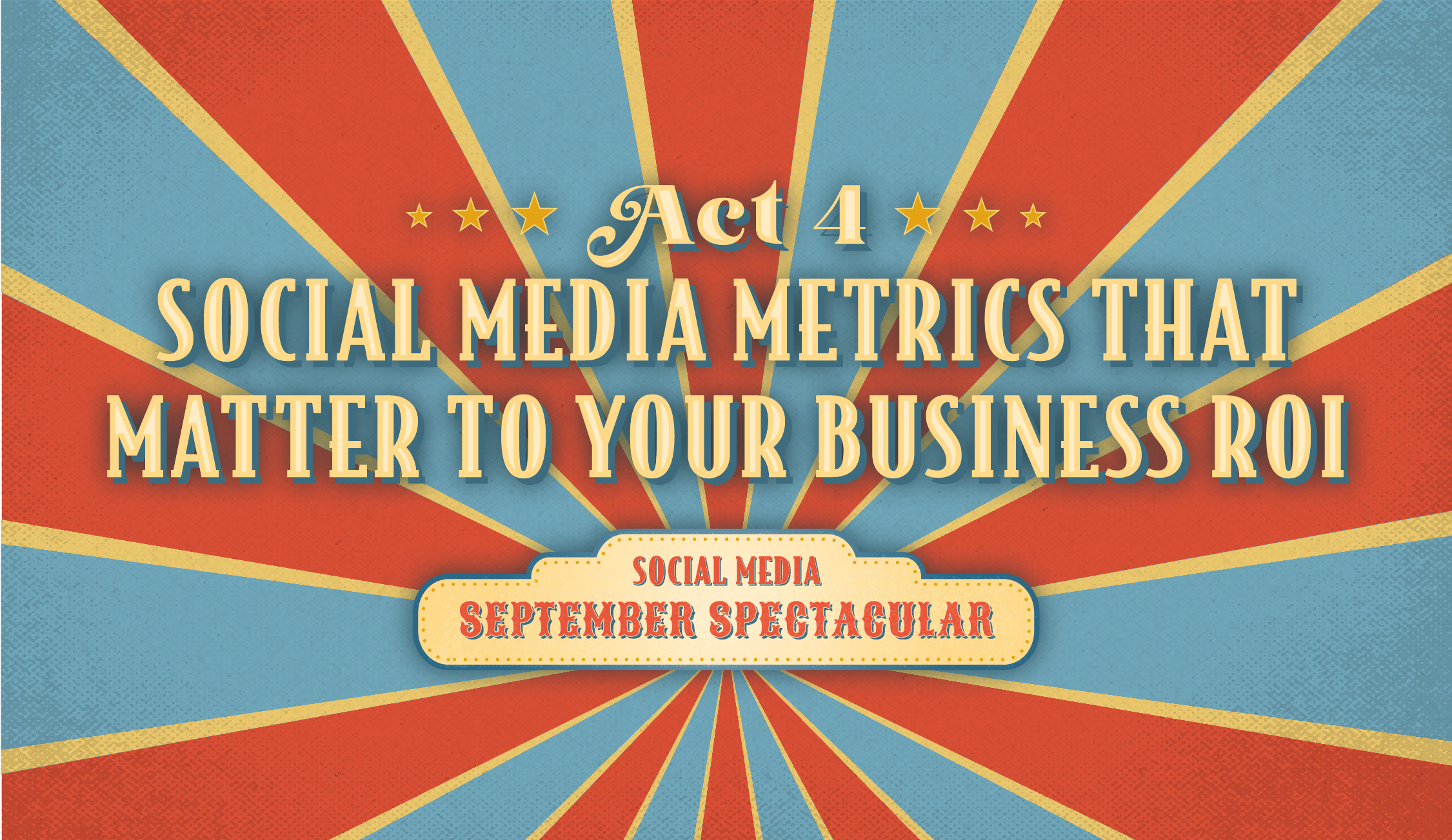Have you ever walked into a meeting with your boss expecting to WOW her with the results from your latest campaign, and come back feeling a little, underwhelmed?
As marketers, it's easy for us to get caught up in the sea of metrics reporting, especially the "soft metric" successes of a campaign like website visits, conversion rates, generated leads per channel, engagement on social media platforms, blog post shares, email click-through rates... and on and on. But with studies that show 73% of executives don’t believe that marketing drives demand and revenue, we have to make sure that we can prove the ROI of our marketing efforts.
Now, yes, these soft metrics are still important, but when it comes to what your boss wants to know, it's time to share the goods on what they care about. So, what metrics DO matter when it comes to showing ROI?
We've compiled a list of the Six Super ROI Tracking Metrics to share with your boss that may just finally get her to give you that extra budget bump you've been asking for.
Six Super ROI Tracking Metrics
Customer Acquisition Cost (CAC)
What It Is: The Customer Acquisition Cost (CAC) is a metric used to determine the total average cost your company spends to acquire a new customer.
What This Means and Why It Matters: CAC illustrates how much your company is spending per new customer acquired. You want a low average CAC. An increase in CAC means that you are spending comparatively more for each new customer, which can imply there’s a problem with your sales or marketing efficiency.
Marketing % of Customer Acquisitions Cost
What It Is: The Marketing % of Customer Acquisition Cost is the marketing portion of your total CAC, calculated as a percentage of the overall CAC.
What This Means and Why It Matters: The M%-CAC can show you how your marketing team's performance and spending impact your overall Customer Acquisition cost. An increase in M%-CAC can mean a number of things:
- Your sales team could have underperformed (and consequently received) lower commissions and/or bonuses.
- Your marketing team is spending too much or has too much overhead.
- You are in an investment phase, spending more on marketing to provide more high quality leads and improve your sales productivity.
Ratio of Customer Lifetime Value to CAC (LTV:CAC)
What It Is: The Ratio of Customer Lifetime Value to CAC is a way for companies to estimate the total value that your company derives from each customer compared with what you spend to acquire that new customer.
What This Means and Why It Matters: The higher the LTV:CAC, the more ROI your sales and marketing team is delivering to your bottom line. However, you don’t want this ratio to be too high, as you should always be investing in reaching new customers. Spending more on sales and marketing will reduce your LTV:CAC ratio, but could help speed up your total company growth.
Time to Payback CAC
What It Is: The Time to Payback CAC shows you the number of months it takes for your company to earn back the CAC it spent acquiring new customers.
What This Means and Why It Matters: In industries where your customers pay a monthly or annual fee, you normally want your Payback Time to be under 12 months. The less time it takes to payback your CAC, the sooner you can start making money off of your new customers. Generally, most businesses aim to make each new customer profitable in less than a year.
Marketing Originated Customer %
What It Is: The Marketing Originated Customer % is a ratio that shows what new business is driven by marketing, by determining which portion of your total customer acquisitions directly originated from marketing efforts.
What This Means and Why It Matters: This metric illustrates the impact that your marketing team’s lead generation efforts have on acquiring new customers. This percentage is based on your sales and marketing relationship and structure, so your ideal ratio will vary depending on your business model. A company with an outside sales team and inside sales support may be looking at 20-40% Margin Originated Customer %, whereas a company with an inside sales team and lead focused marketing team might be at 40-80%.
Marketing Influenced Customer %
What It Is: The Marketing Influenced Customer % takes into account all of the new customers that marketing interacted with while they were leads, anytime during the sales process.
What This Means and Why It Matters: This metric takes into account the impact marketing has on a lead during their entire buying lifecycle. It can indicate how effective marketing is at generating new leads, nurturing existing ones, and helping sales close the deal. It gives your CEO or CFO a big-picture look into the overall impact that marketing has on the entire sales process.
Ready to get started?
Download your guide!








